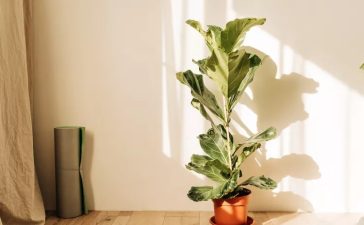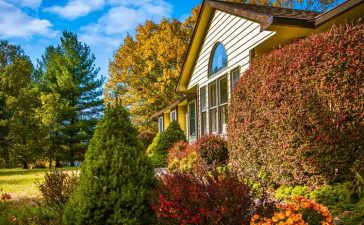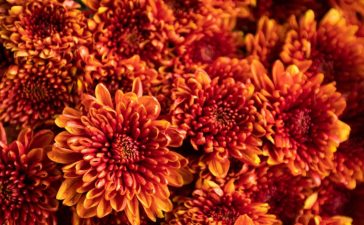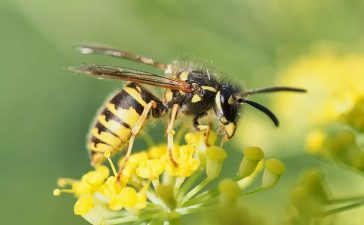The fiddle leaf fig has been a reigning star in the world of indoor plants for at least five years now, and its popularity continues to soar in the United States. Although it briefly faced competition from the olive tree, the fiddle leaf fig remains the top choice for adding a lush and vibrant touch to any room in your home. If you’ve recently acquired a fiddle leaf fig or are considering getting one, use the following guide as your go-to resource for caring for this widely adored houseplant.
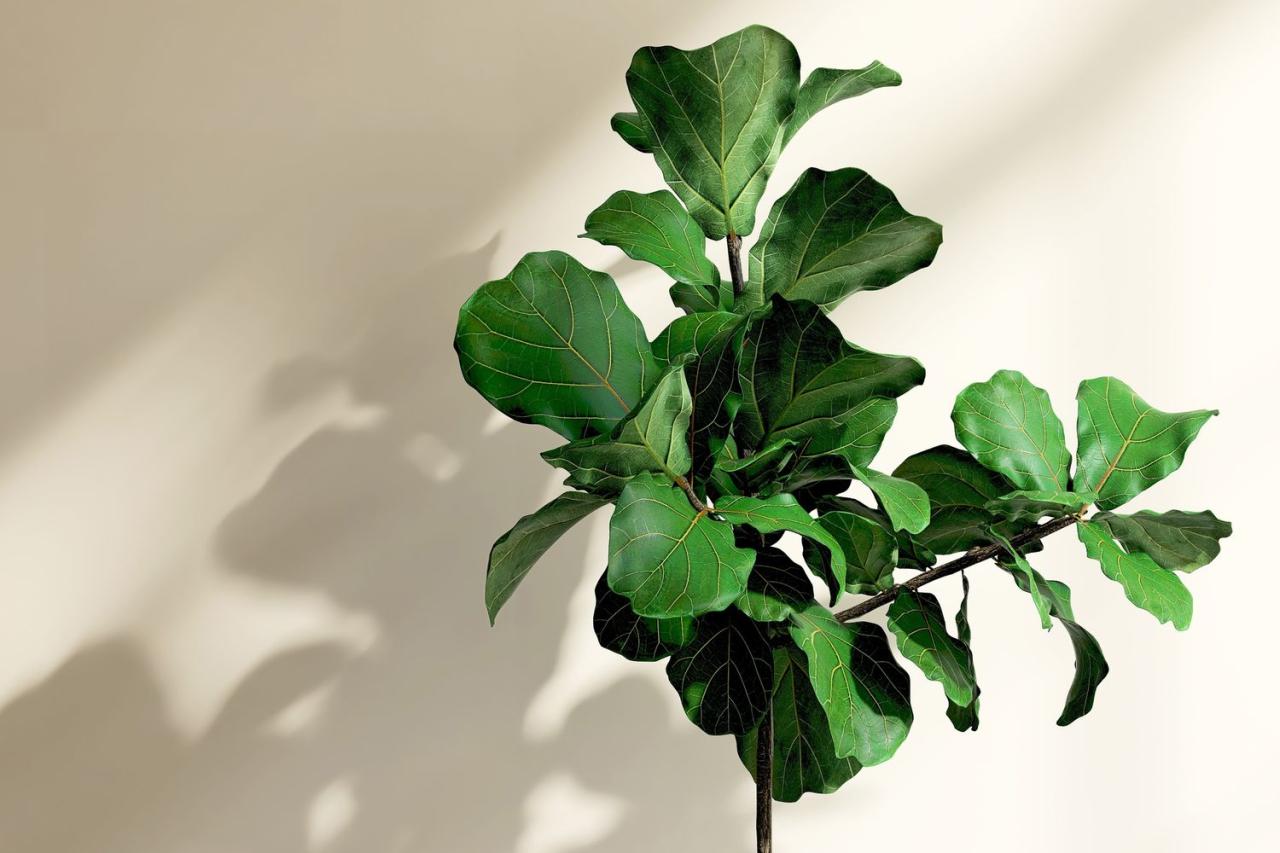
Characteristics
The fiddle leaf fig belongs to the ficus genus, which encompasses various fig plants such as the rubber tree, weeping fig, ficus Audrey, and more. However, the fiddle leaf fig is distinct in that it does not produce fruit. Its glossy, vibrant green leaves are its most recognizable feature, resembling the shape of a fiddle, hence the name. These leaves are large, long, and possess a leathery texture with prominent veins. While they can grow to towering heights of up to 49 feet in their natural habitat of Western African rainforests (including countries like Cameroon and Sierra Leone), indoor fiddle leaf figs typically reach a maximum height of around 10 feet.
Despite originating in tropical rainforests, fiddle leaf figs have gained immense popularity as houseplants due to their striking appearance. However, they come with their fair share of idiosyncrasies. A quick search for this plant on TikTok reveals thousands of videos featuring both exasperated plant parents mourning fallen leaves and proud owners of thriving fiddle leaf figs sharing their best care tips.
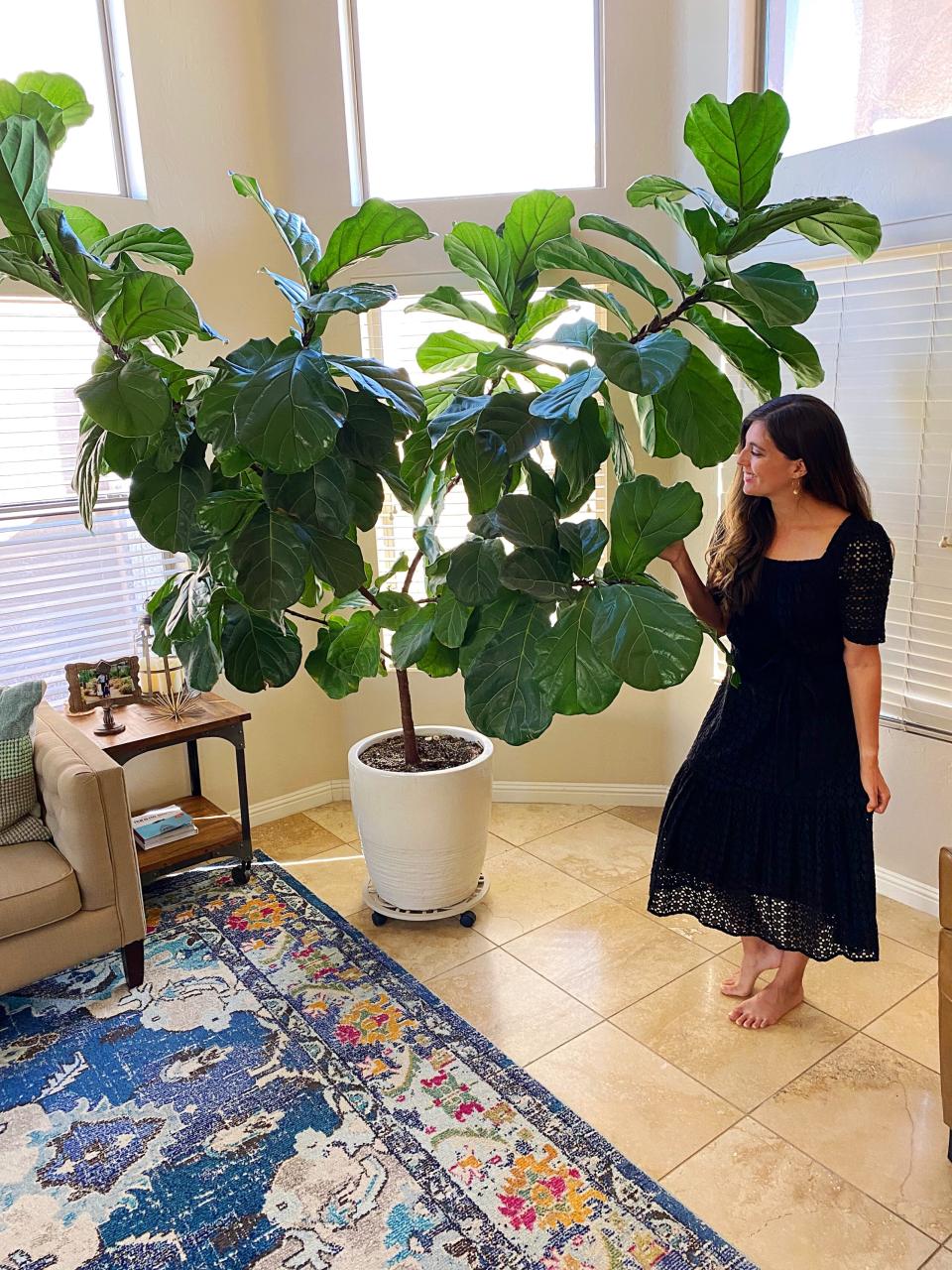
Care Tips
Light is a critical factor for the well-being of your fiddle leaf fig. According to Bloomscape, these plants thrive in bright, indirect light. This means they should not be exposed to direct sunlight at any point during the day. Instead, consider placing them near a window with indirect sunlight or beside a window, preferably facing east, and use sheer curtains to diffuse the light. It’s important to avoid low-light conditions, as this can result in yellowing leaves that may eventually drop.
Regarding temperature and humidity, maintain an environment with temperatures ranging from 60 to 80°F. Moderate humidity levels are ideal; therefore, it’s advisable to place a humidifier nearby or occasionally mist the plant. Given its tropical origins, the fiddle leaf fig appreciates a slightly more humid atmosphere.
When it comes to watering, wait until 50 to 75 percent of the soil has dried out before watering again. Ensure that water penetrates the soil thoroughly and drains from the pot’s drainage hole. This practice encourages a healthy root system.

In terms of soil, fiddle leaf figs prefer slightly acidic soil enriched with organic matter. A well-balanced soil mix consists of compost, peat moss, perlite, and sand in equal proportions. This mixture helps retain moisture and nutrients, fostering optimal growth. During the spring, fertilize your fiddle leaf fig once, and increase this to monthly feedings throughout the summer. Be cautious not to over-fertilize, as excessive nutrients can lead to leggy growth, weakening the plant’s structure, which could be detrimental.
Where to Purchase
Fiddle leaf figs have become increasingly popular, leading to their wider availability. What was once considered a high-priced plant can now be found at more affordable rates. You can purchase fiddle leaf figs at hardware stores such as Home Depot, local plant nurseries, and occasionally at retailers like Trader Joe’s and IKEA, which feature them in their house plant sections.
You Might Also Like
Expert Tips on Choosing and Caring for Indoor Trees
Do you have a corner in your home that's crying out for a touch of green? Indoor trees can be...
Tips from Experts to Prepare Your Yard for a Green Spring
While summer is often seen as the peak season for gardening and lawn care, it's important to remember that each...
Radiant Mums: A Guide to Caring for Your Fall Chrysanthemums
Chrysanthemums, commonly known as mums, are cherished for their vibrant beauty and captivating sweet and spicy fragrance, making them a...
Expert Tips for DIY Yellow Jacket Traps
"If you've been dealing with unwanted guests in the form of pests near your home or garden, you might be...






